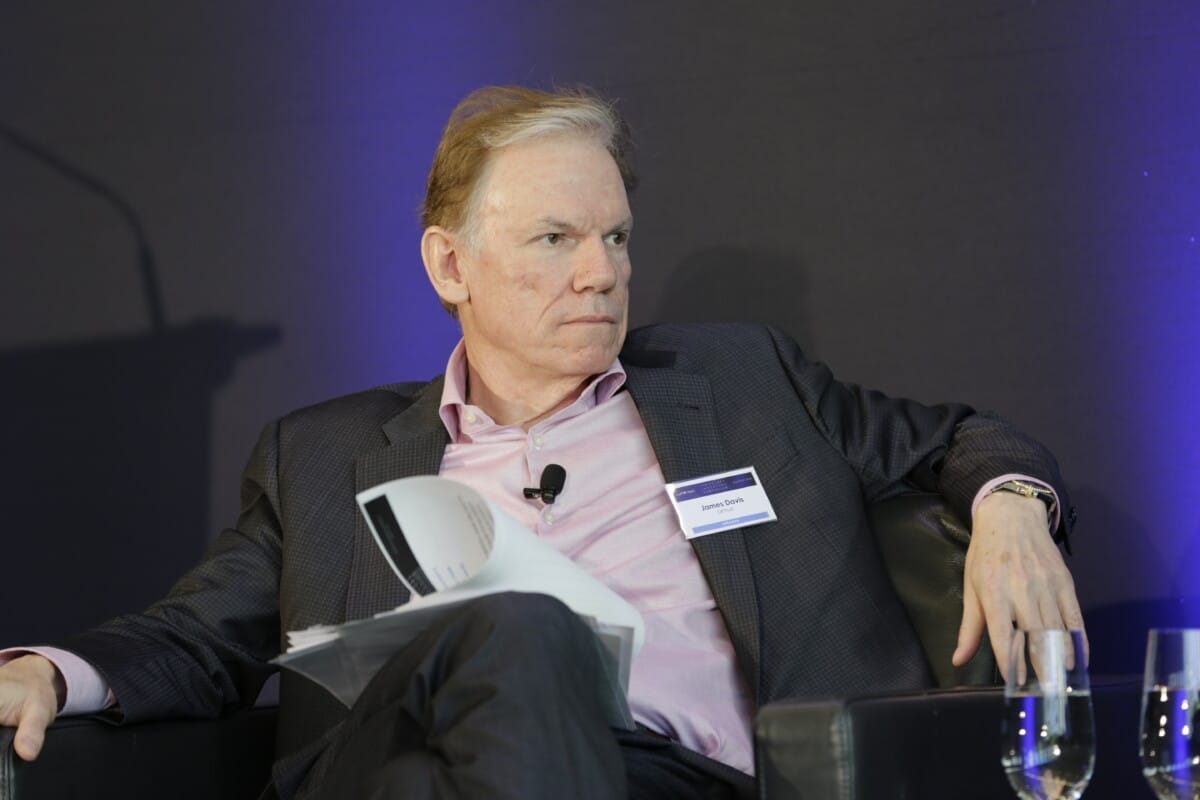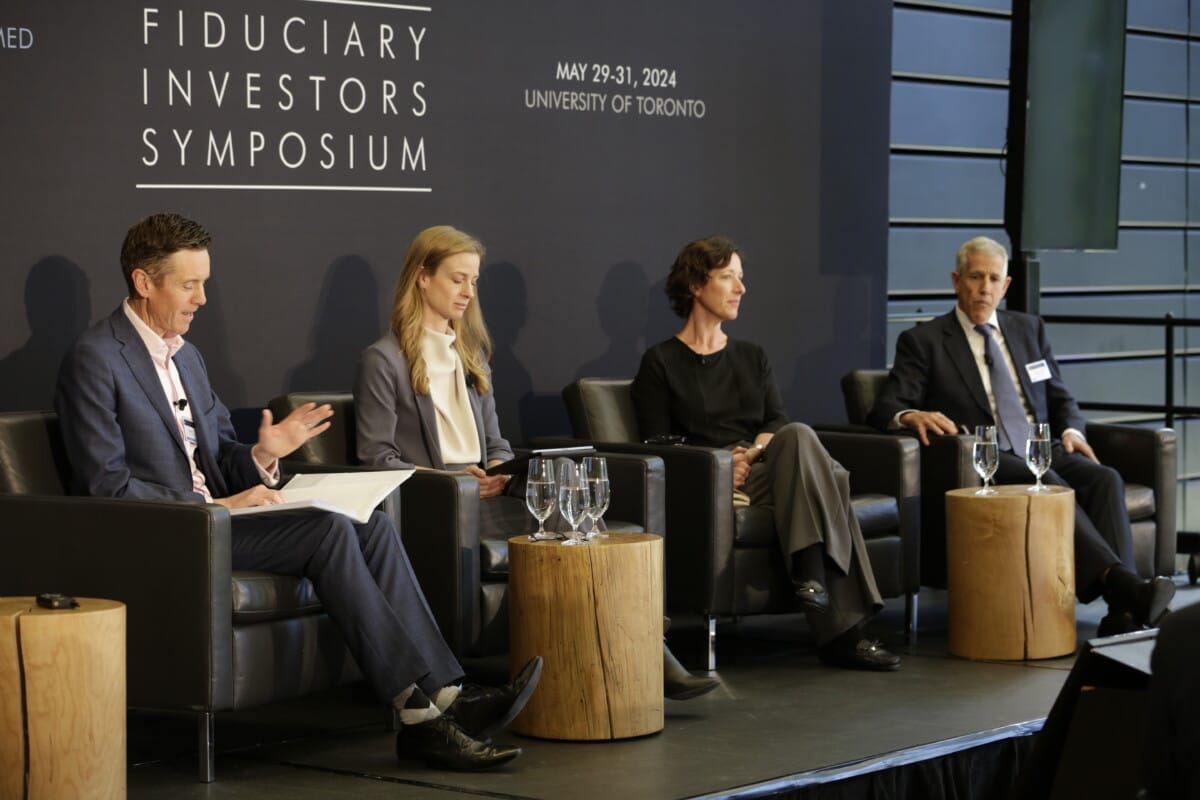For investors with long careers in managing fixed income portfolios, 2022 was “a real shock”, according to APG Asset Management managing director of global fixed income Ann-Marie Griffith.
Griffith manages a €200 billion ($217 billion) fixed income portfolio, roughly 50 per cent in developed market government bonds, about 30 per cent in credit and the balance in emerging markets.
She told the Top1000funds.com Fiduciary Investors Symposium in Toronto that for a considerable period of time, treasuries were viewed as a natural hedge, but in 2022, “that hedge completely broke down and was probably one of the more significant loss drivers across fixed income portfolios”.
“The positive correlations caught many people offside in terms of the balanced portfolio 60/40 mix, but certainly within fixed income portfolios as well,” she said.
“And what I mean by hedges, generally, when you’re long credit risk, whether it’s corporate risk or structured credit risk, you can offset some of that risk with a bit of treasury hedges, because for a long period of time, they were quite negatively correlated,” Griffith said.
But the turnaround in 2022 has led to some rethinking inside Europe’s largest pension investor about “how long and how persistent the correlation between treasuries and underlying fixed income investments will remain positive”.
“And then the inverted yield curve obviously plays a little bit of a role here as well,” Griffith said.
“The cost of hedging across the yield curve can be quite different and also brings into question the traditional ways of looking at risk management within fixed income.”
The three S’s
Griffith told the symposium that “there’s quite a lot riding on when that positive correlation breaks down”.
“And if it’s intermittent, how agile can you be, how tactical can you be in adjusting your hedges so your hedges don’t undermine your actual investments in your portfolio?” she said.
“Hopefully, we’re not going from 5 to 10 per cent in terms of interest rates, but there is some question about how persistent these higher rates will be, and if in fact the Fed – it is actually the Fed and other central banks around the world – have done enough.
“You’ve seen the US economy be incredibly resilient in the face of these higher rates. One would expect that to have slowed things down quite drastically, but that was not the case. So there’s a lot of thinking going on a lot of challenging assumptions and again, making things more resilient and preparing for what, what might come.”
The bond rally of March 2020 was the kind of reaction to be expected in a period of crisis when risk assets sell off, said Maryland State Retirement and Pension System chief investment officer Andrew Palmer.
However, then “the bond market broke, and the Fed had to step in”, Palmer said. He believes from a structural perspective, that bonds still provide that hedge, but they may not provide it over short, intermediate periods of time”.
“And it may take extraordinary efforts by the Fed,” he said.
“So, I have got three Ss to talk about. Structure is the first; so the structure is different. The size is different, that’s the second S. And then the third one is sustainability.
“And my basic point is, I think we have to think differently than just looking in the rearview mirror and saying, ‘This is how they performed in the past’. Even if you go back to 1980, there was a positive correlation then. But I think you could think it has some different attributes to really pay attention to and try to incorporate into your portfolio construction going forward.”
Palmer said that the fund is currently rethinking how it approaches fixed income management.
“I’m thinking about things; doesn’t mean [I am] changing anything,” Palmer said.
“At the moment, we’re thinking [it] through. We have a one-year process we’re kicking off with our board on asset allocation. We’ve had a long duration portfolio, which has been sort of a pretty much of a drag over the last three years.
“I do believe that going forward, it’s actually got a lot more portfolio utility than it has had in the past. The cost of insurance is cheaper you’re getting it doesn’t cost you a lot to have it.
“I still believe in the role of it, I just think maybe for the implementation or through more stress testing and those types of things, I think we have to be a bit more dynamic in how we manage it.”
The symposium heard that paying attention to geographical diversification could become a more prominent aspect of fixed income management.
That’s one thing we’re going to look more closely at,” Palmer said.
“We’ve been very US focused. One, because it wasn’t very attractive to go elsewhere, with negative rates and much of the world, and our liabilities are all in dollar; but I do believe we’ll, we’ll be looking at non-dollar allocations to sort of build in some more diversification on the bond side.”
Regime shift
MFS Investment Management fixed income portfolio manager Ward Brown said if the post-2022 stock-bond correlation proves to be more than transient, “that has some big implications for portfolio construction”.
When interest rates are raised by central banks to curb inflation driven by demand, it generally indicates a growing underlying economy. But when rates are raised to tame inflation caused by supply constraints, the underlying economic fundamentals can be quite different.
“What’s critical for thinking about this positive correlation is whether or not those demand shocks are going to continue driving inflation, or whether it’s going to be something else,” he said.
“What else could cause inflation to be higher and move inflation around? Well, one obvious answer is supply shocks.
“That’s a situation where inflation goes higher, but growth doesn’t move. In fact, growth might go lower. So in that circumstance, you’re going to get this positive correlation.”
But growth isn’t responding, Brown said.
“And so equities and any long-duration asset is going to be very sensitive to interest rates,” he said.
“They’ve got two things driving those assets: growth and the discount rate. If growth isn’t doing anything, then they’re just going to respond to the discount rate. No higher growth, but central banks are raising rates. That’s how you get this positive correlation: raising rates, bond yields go down, and long-duration assets go down as well.
“That’s important to think about when you’re saying, Well, we’re going to get persistence, because one argument that we’re going to have this positive correlation persisting is that we’re going to have continued supply shocks in the future, and they’re going to dominate over demand shocks.”
Brown said investors also need to consider whether central banks around the world might move away from inflation-targeting strategies, which he said grew out of the supply shocks of the 1970s (the OPEC oil crisis) but also when the Fed moved away from the Gold Standard.
“When people say, well, we’re going to be in this high inflationary environment that’s not going to be correlated with growth’, they have some sense that we’re going back to the 1970s,” he said.
“But I think that’s not very likely, as long as these inflation-targeting regimes stay in place. And whether they stay in place is a is a political prediction.”
Brown said he predicts that the positive correlation between stocks and bonds “probably does not persist in the way people are thinking of the 1970s”.
“It may be more incremented, because we may have large supply shocks going forward for a number of reasons,” he said.
“But they are probably going to be transitory, and we’ll go back between positive and negatively correlated regimes.”


